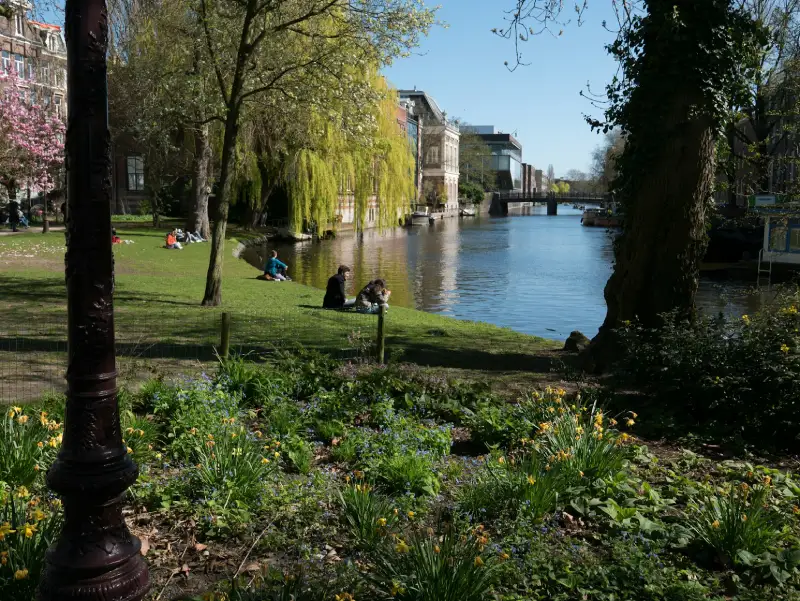Making sustainable choices goes beyond individual actions — it represents a collective commitment to environmental stewardship. Each decision to reduce waste, conserve energy, or support eco-friendly practices contributes to meaningful environmental progress. Communities worldwide are proving that practical, accessible solutions exist for reducing our environmental impact while building stronger, more resilient neighborhoods.
Environmental responsibility starts with straightforward, manageable steps that add up over time. From neighborhood composting projects to energy-efficient home improvements, individuals and communities are finding creative ways to protect natural resources. These sustainable practices often bring unexpected benefits: lower utility bills, stronger community bonds, and healthier living spaces. Simple changes in daily habits, combined with community-wide initiatives, create lasting positive effects on our environment.
The Importance of Making Sustainable Choices
The environmental impact grows from countless small decisions made each day. Personal choices ripple outward, affecting local ecosystems, resource consumption, and community well-being. When people understand how their actions connect to environmental outcomes, they make better-informed decisions that benefit both their households and their communities.
Individual Actions, Global Impact
Shopping with reusable bags, choosing energy-efficient appliances, and reducing water usage create immediate benefits for local environments. These choices reduce waste, conserve resources, and decrease pollution at their source. Such actions, multiplied across households and communities, build substantial positive change through a shared commitment to environmental protection.
When people choose locally grown food, they support sustainable agriculture while reducing transportation emissions. Opting for durable products over disposable alternatives decreases manufacturing demand and landfill waste. Each choice sets an example that neighbors, friends, and family members often follow.
Building Momentum Through Consistency
Regular sustainable practices create lasting positive changes in communities. People who maintain consistent eco-friendly habits often find their methods spreading naturally to others in their social circles. Neighbors notice solar panels and rain barrels, coworkers adopt reusable containers after seeing them at lunch, and children share environmental lessons with classmates. These natural patterns of influence amplify individual actions into community-wide practices.
The power of collective environmental action grows as more people maintain sustainable habits. Community composting programs expand when residents participate consistently. Recycling becomes more cost-effective as participation increases. Public transportation systems improve with steady ridership. When communities sustain their environmental practices, they create social and economic incentives that make sustainable choices easier for everyone.
Tools for Sustainable Decision-Making
Making sustainable choices becomes simpler with practical resources that help evaluate environmental impact. Modern tools range from simple checklists to advanced digital platforms, offering clear guidance for both beginners and experienced environmental advocates. These resources remove the guesswork from sustainable living while making eco-friendly choices more accessible. Well-designed tools adapt to different lifestyles and circumstances, supporting personal environmental goals without overwhelming users.
Assessment Tools and Frameworks
Environmental decision-making improves with structured guidance. Visual decision trees guide sustainable choices, helping people weigh options systematically when selecting products or practices. Digital calculators measure resource usage across categories like energy, water, and waste, while carbon footprint tools track progress through daily choices. Combined with local recycling databases and product lifecycle information, these frameworks support informed environmental decisions.
Digital Solutions for Sustainable Living
Smart technology simplifies sustainable practices through intuitive apps and platforms. Mobile applications track household energy use, suggest efficiency improvements, and connect users with local environmental initiatives. Online marketplaces highlight eco-certified products, while community-sharing platforms reduce waste by facilitating equipment lending and material reuse. These digital tools turn complex environmental choices into manageable daily actions.
Innovations Supporting Sustainability
New solutions make environmental care more practical and effective on the individual and community scales. For example, simple home devices and sophisticated agricultural equipment give communities better options for reducing waste and conserving resources. Broader accessibility to more sophisticated tools and methods helps people protect the environment whether they live in apartments, houses, or rural areas.
Agricultural and Energy Solutions
Through advanced techniques, farming practices now support healthier environments. Precision agriculture benefits farms and communities, offering reduced water consumption and fewer chemical inputs without sacrificing crop yields. On rooftops and across rural landscapes, compact solar panels and wind turbines are becoming resilient enough to work in geographically diverse settings. Reliable battery systems can also store renewable power for everyday needs, letting households monitor and fine-tune their energy use through intuitive meters.
Waste Reduction Technologies
Creative reuse strategies and enhanced processing methods are reducing waste in communities. At recycling centers, advanced sorting technologies yield cleaner, higher-quality materials for reuse. In urban areas, residents convert kitchen scraps into garden soil using efficient, odor-free composting systems. Meanwhile, many manufacturers are moving beyond traditional recycling, designing products with biodegradable packaging and repairable components that remain out of landfills longer.
How to Encourage Local Action and Community Engagement
Local environmental projects succeed when neighbors work together toward shared goals – people who might never meet otherwise find common ground tending community gardens or planning neighborhood cleanups. These connections strengthen communities while creating positive environmental change that lasts longer. When residents see their collective efforts improving their surroundings, they often discover new ways to protect and enhance their local environment.
Building Community Initiatives
Environmental projects take root when residents identify specific local needs, whether it’s excessive litter in parks or food access challenges. Initial planning groups focus on achievable goals: organizing weekly recycling drives, converting unused lots into gardens, or establishing drop-off points for hard-to-recycle items. Support grows organically as these core groups connect with schools, faith communities, and local businesses to share resources and expertise.
Creating Lasting Environmental Impact
Strong environmental programs build momentum through structured planning and measured results. Successful initiatives track specific metrics like volunteer hours, waste collection totals, and garden yields to demonstrate their value to community stakeholders. Well-documented successes help secure grants and municipal support while established programs mentor new groups in other neighborhoods, sharing tested strategies and avoiding common pitfalls.
Final Thoughts
As global temperatures reach record highs, communities worldwide demonstrate the power of local environmental action. From thriving neighborhood gardens to expanding recycling programs, successful initiatives prove that positive change starts with practical steps.
Many effective solutions like composting systems, tool-sharing programs, and renewable energy projects already exist and grow stronger through community participation. When people work together, making sustainable choices becomes easier, creating lasting environmental improvements that spread naturally to surrounding areas.




